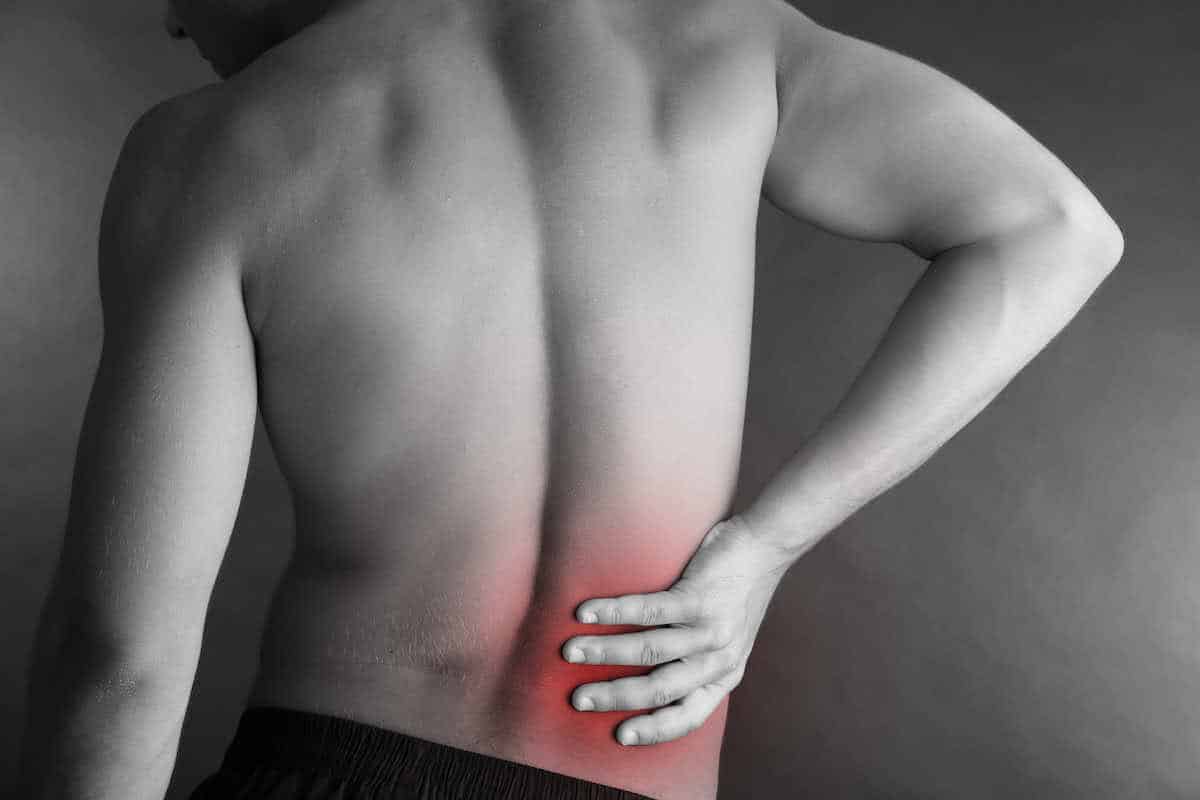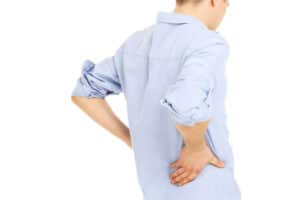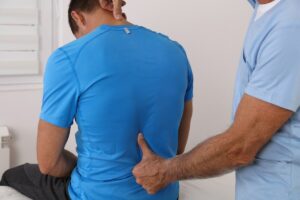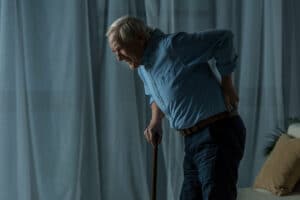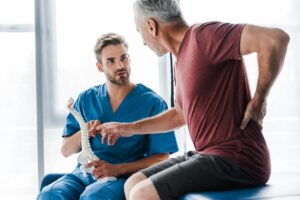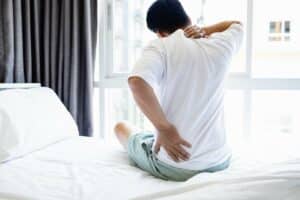Free download: Top 10 Natural & Easy Remedies for Joint Pain from Home. Learn these helpful remedies.
Estimated Reading Time: 7 minutes read
We all have heard the saying, “Sitting is the new smoking.” If you find yourself reminiscing about the good old days when you could sit for hours without any discomfort, you’re not alone.
But, alas, times have changed. As we age, our bodies become less forgiving, and low back pain becomes more common. In this article, we’ll explore the reasons behind low back pain caused by prolonged sitting and sprinkle in some humor to keep things light.
Table of Contents
Causes of Low Back Pain While Sitting
1. Pressure on Lumbar Intervertebral Discs
Remember the days when you could sit through an entire baseball game without feeling like you needed a chiropractor? Well, those days are gone, my friend. Sitting puts 40% to 90% more pressure on your lumbar discs, which act as shock absorbers for your spine. Over time, these discs can weaken, especially near the spinal nerves. This can cause low back pain, sciatica, or even “pinched nerves.”
You might think, “Why can’t my lumbar discs handle the pressure like they used to?” Well, like a classic car, they don’t make them like they used to. With age, discs become more susceptible to wear and tear. Plus, they don’t have their own blood supply, relying on surrounding structures for nutrition. Prolonged sitting can lead to thinning of these discs, which means less cushion for your spine.
2. Tight and Weak Muscles
Sitting for long periods causes certain muscles to shorten and become weak. One prime example is the iliopsoas muscle or the “hip flexor.” When you sit, this muscle slackens or can become tight, leading to low back pain. It’s like when you try to fit into those jeans from 30 years ago – it’s just not happening.
Additionally, extended sitting can contribute to poor gluteal muscle activity. Remember when your glutes could hold up a pair of bell bottoms like nobody’s business? Well, now they’re just slacking off, becoming weak and underactive, leading to pelvic instability and discomfort.
3. Deconditioning
Sitting for extended periods causes muscles in the low back, hips, and pelvis to become inactive. After years of sitting, these muscles experience deconditioning, making them lazy, weak, and underactive. Think of your muscles as your favorite sitcom: after too many seasons, they lose their edge and become less effective.
The Benefits of Exercise for Low Back Pain
Exercise is essential in maintaining overall health and well-being, particularly for those experiencing low back pain due to prolonged sitting. A strong core helps alleviate existing low back pain and prevents its recurrence. Regular physical activity strengthens the back, hips, and pelvis muscles, providing better support for the spine and reducing the risk of injury.
In addition to improving flexibility and range of motion, exercise promotes blood circulation, delivering essential nutrients and oxygen to the lumbar discs and other tissues in the back. Improved blood flow also aids in the removal of waste products and inflammatory substances, promoting healing and reducing discomfort.
Regular physical activity contributes to weight management, which is crucial for preventing low back pain. Maintaining a healthy weight reduces the pressure on the lumbar region. Excess body weight puts additional strain on the spine, leading to increased pain.
Lastly, exercise offers mental health benefits, as it releases endorphins – the body’s natural painkillers and mood elevators. These chemicals help reduce the perception of pain and promote feelings of well-being and relaxation.
In summary, engaging in regular exercise provides numerous benefits for individuals experiencing low back pain due to prolonged sitting. By strengthening muscles, improving flexibility, promoting blood circulation, managing weight, and providing mental health benefits, exercise can significantly alleviate low back pain and improve the overall quality of life.
Exercises to Alleviate Low Back Pain
Here’s a list of exercises you can incorporate into your daily routine to help alleviate low back pain caused by sitting for long periods. These exercises focus on stretching and strengthening the muscles most commonly affected by prolonged sitting.
1. Seated Pelvic Tilts
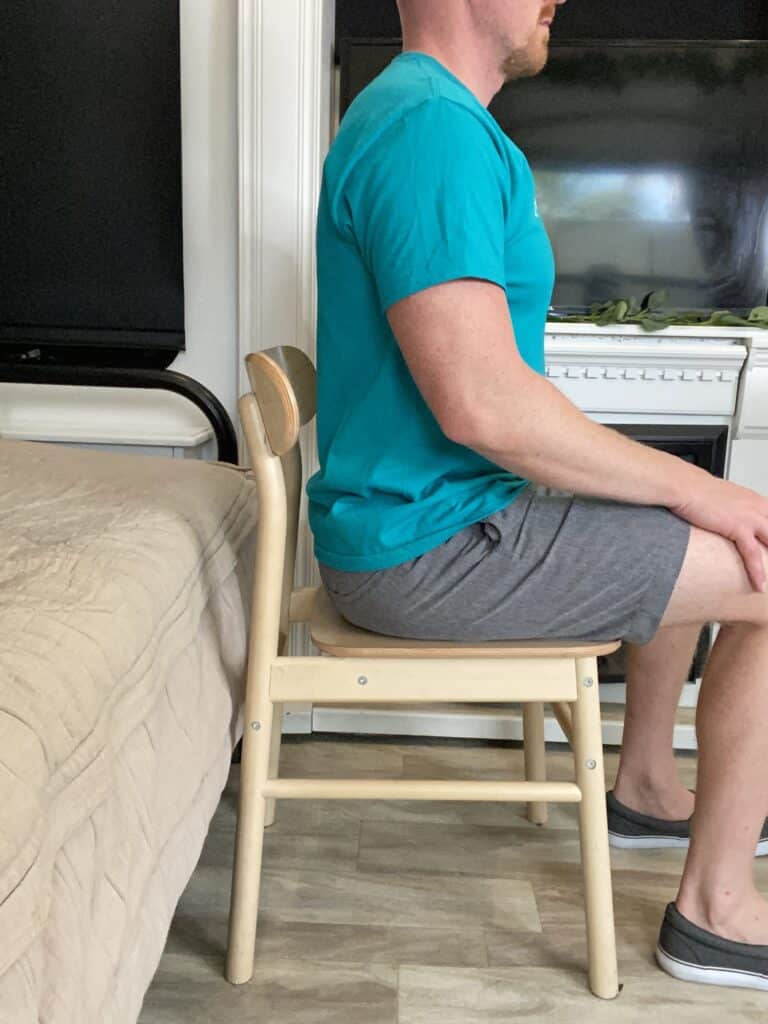
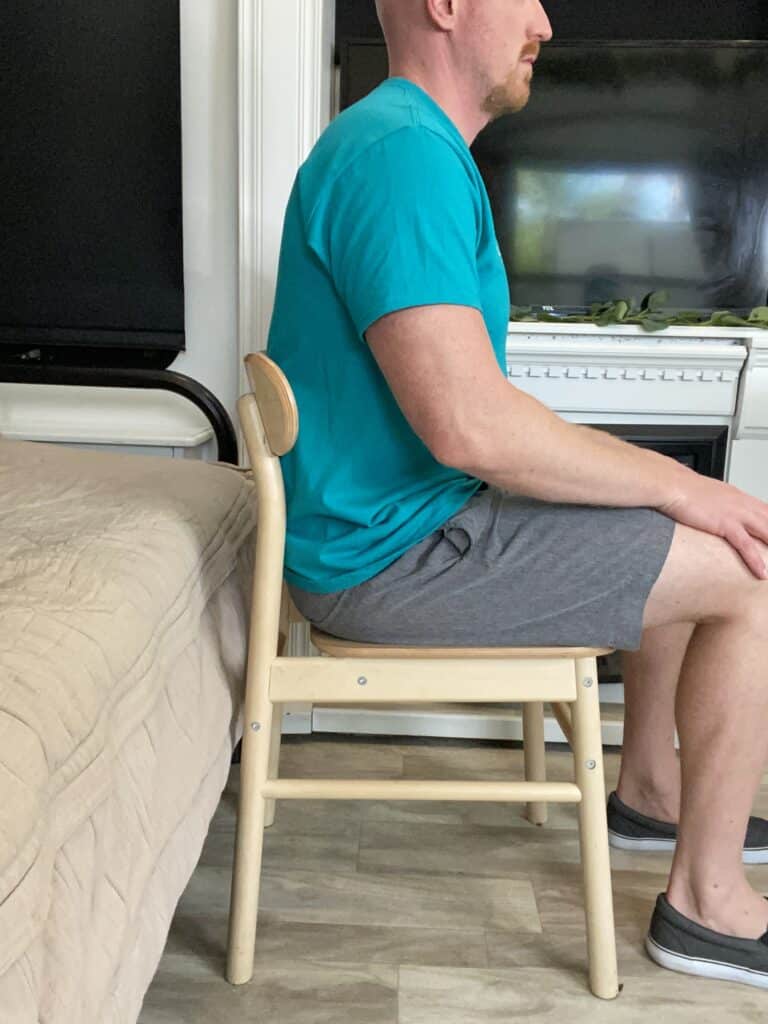
- Sit upright in a chair with your shoulders relaxed. Take a deep inhale and expand your belly.
- As you exhale, contract your abdominal muscles by pulling your belly button in towards your spine and flattening your low back against the chair.
- Hold this position for 5 seconds and then slowly relax. Repeat 10 times.
2. Seated Hamstring Stretch
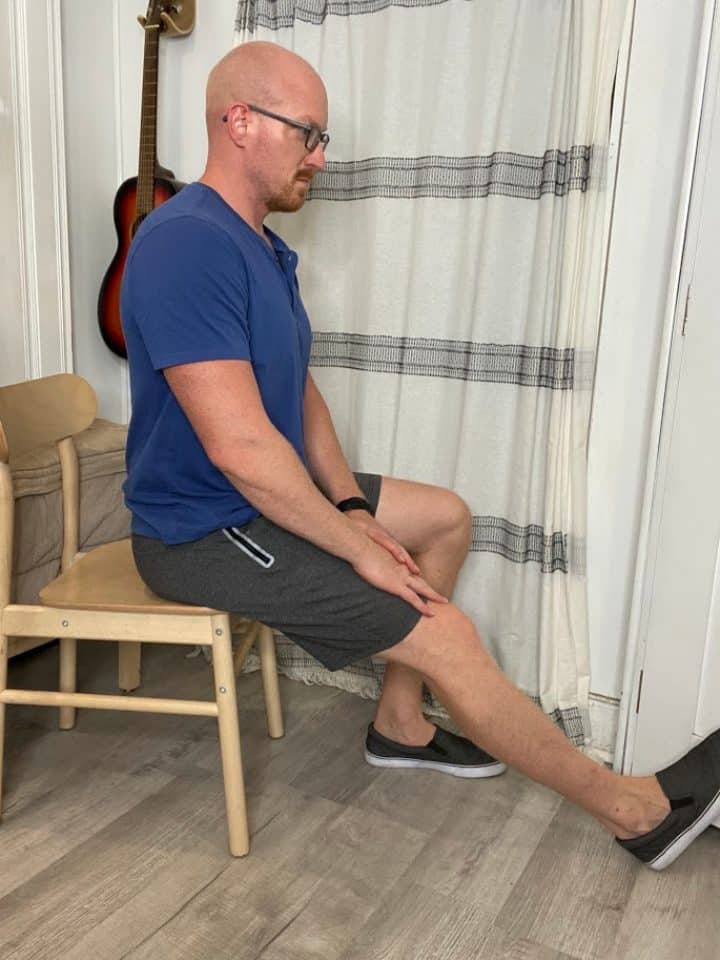
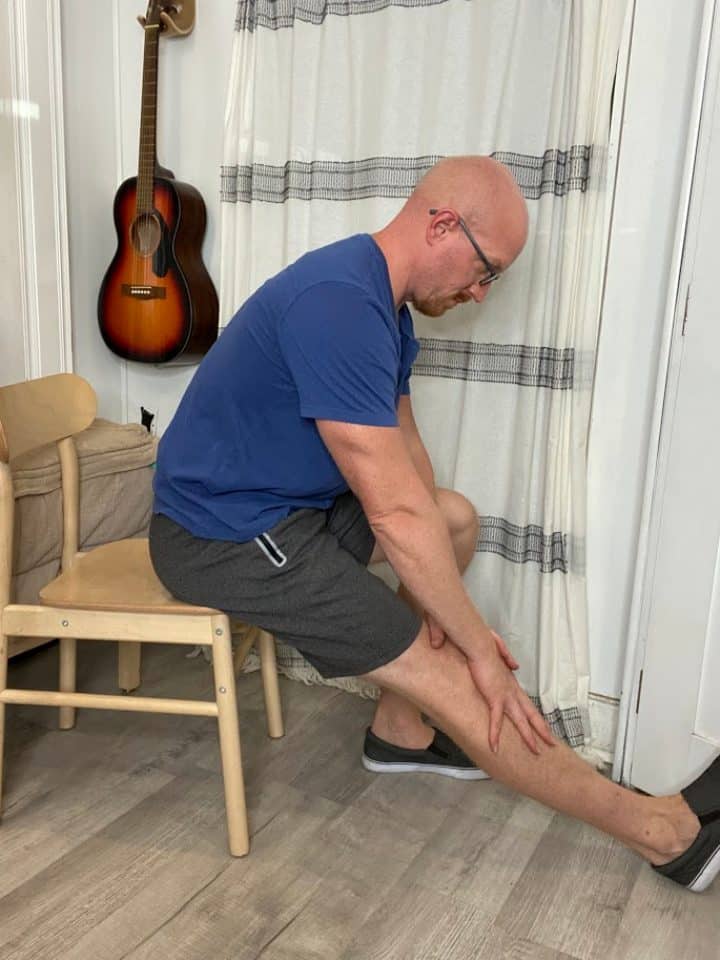
- Seated in a chair, place the leg to be stretched and extended in front of you (the knee should be straight).
- Keeping a straight back, bend forward via hinging at the hips.
- Once you feel a tolerable stretch behind the back of the leg, hold for at least 30 seconds.
- Repeat 3 Times.
3. Hip Flexor Stretch
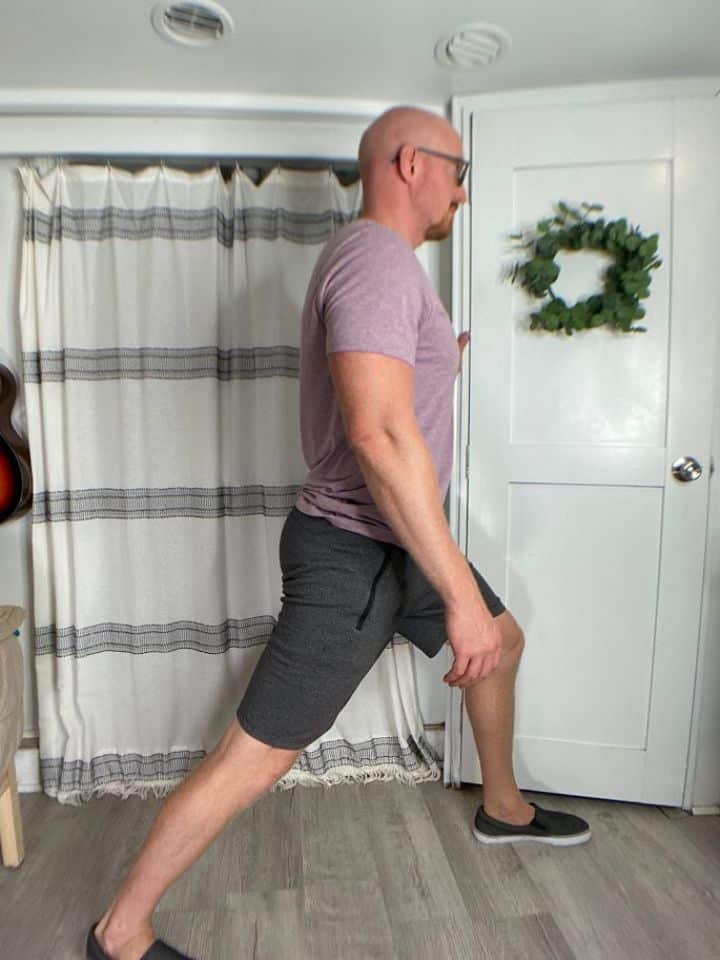
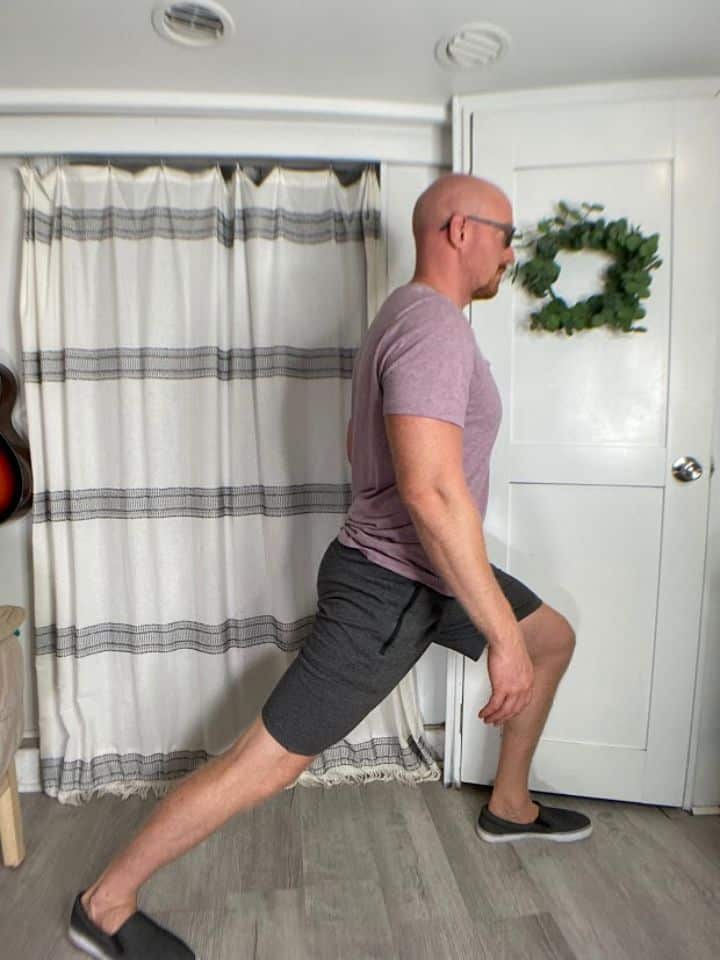
- Begin standing in front of a sturdy surface, such as the countertop, in case you need additional balance support.
- Position the unaffected leg forward and the painful leg back (the further apart the legs are, the stronger the stretch for the hip flexors).
- The front leg should have a bent knee, while the other knee in the back should be straight.
- Lean the body forward towards the front leg until a stretch is felt in the front of the hip in the back leg (make sure to keep both heels on the ground).
- Hold the stretch for at least 30 seconds.
- Repeat 3 times.
4. Piriformis Stretch
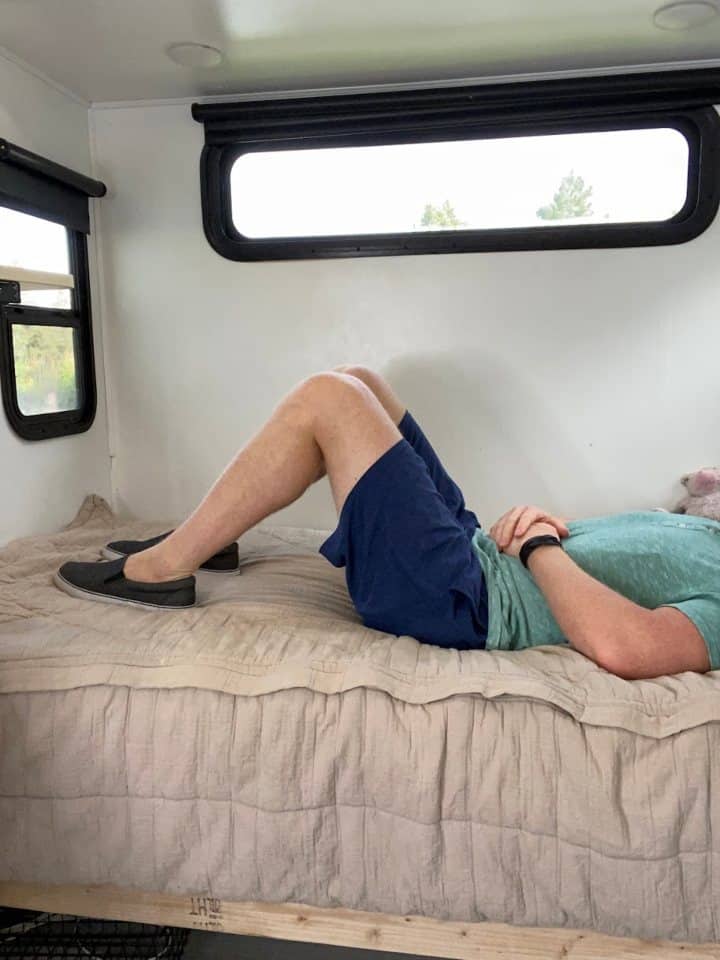
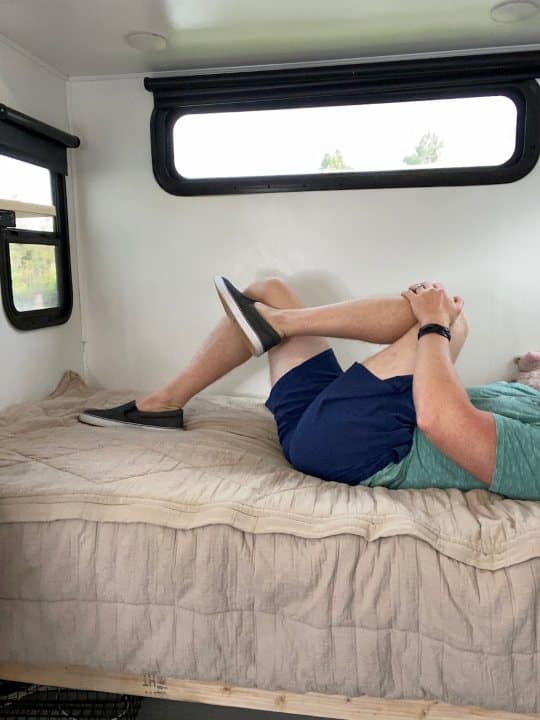
- Begin by lying on your back with both knees bent.
- Cross your left leg over your right, then gently pull your left knee towards your right shoulder using both arms.
- Hold for 30 seconds.
- Relax and repeat 3 sets on each leg.
5. Clamshells
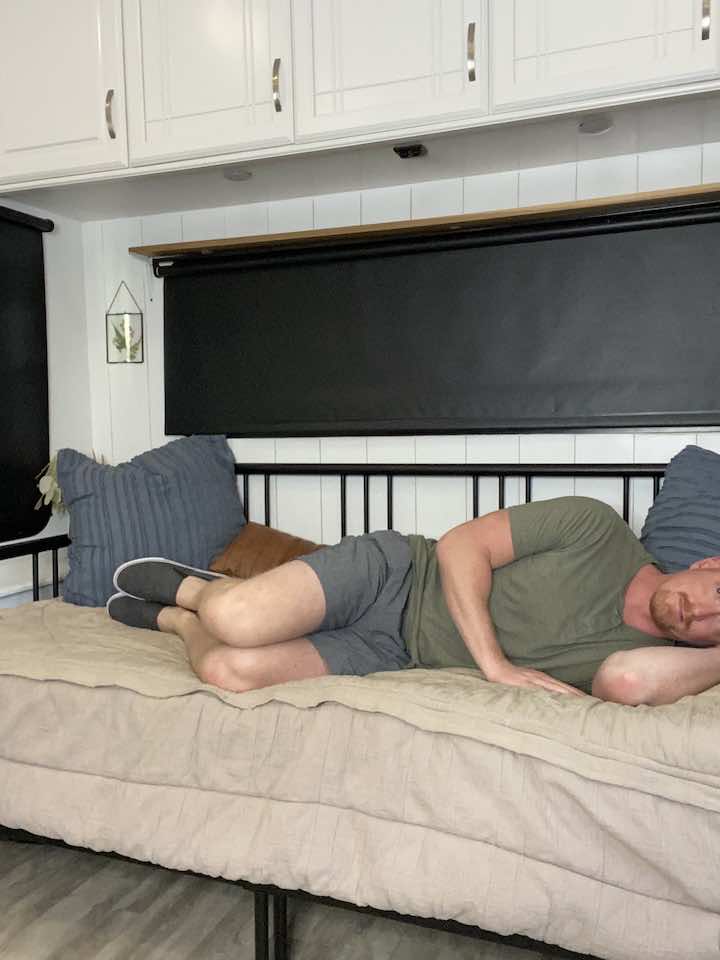
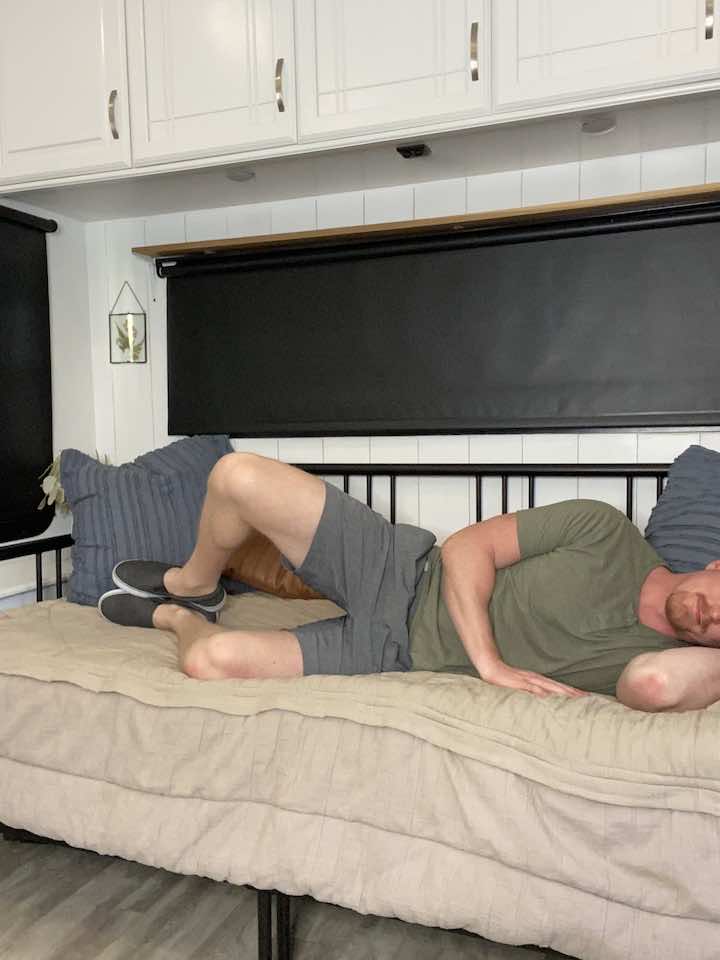
- Start by laying on your side with both knees bent.
- Keep your feet in contact with each other, and then rotate your top leg up. Make sure you keep your spine in alignment, and your hips don’t rock back! Rule of thumb is to do a smaller range of motion if you think your back is moving.
- Rotate your top leg back down to the starting position.
- Do this exercise 10 times in each set.
- Complete 3 sets of the exercise.
6. Side-Lying Leg Lifts
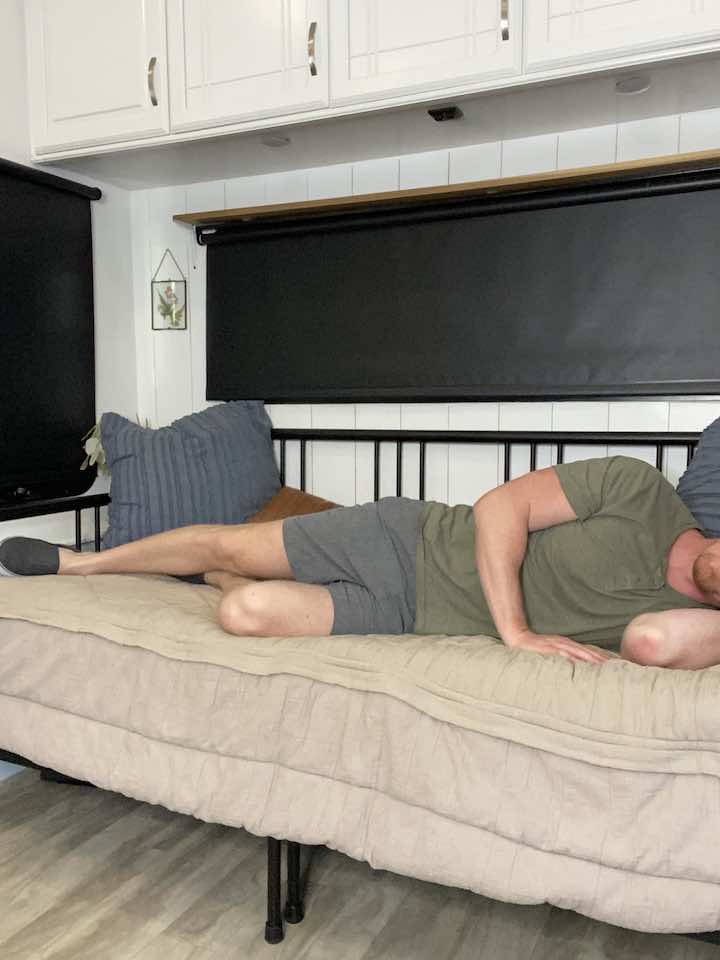
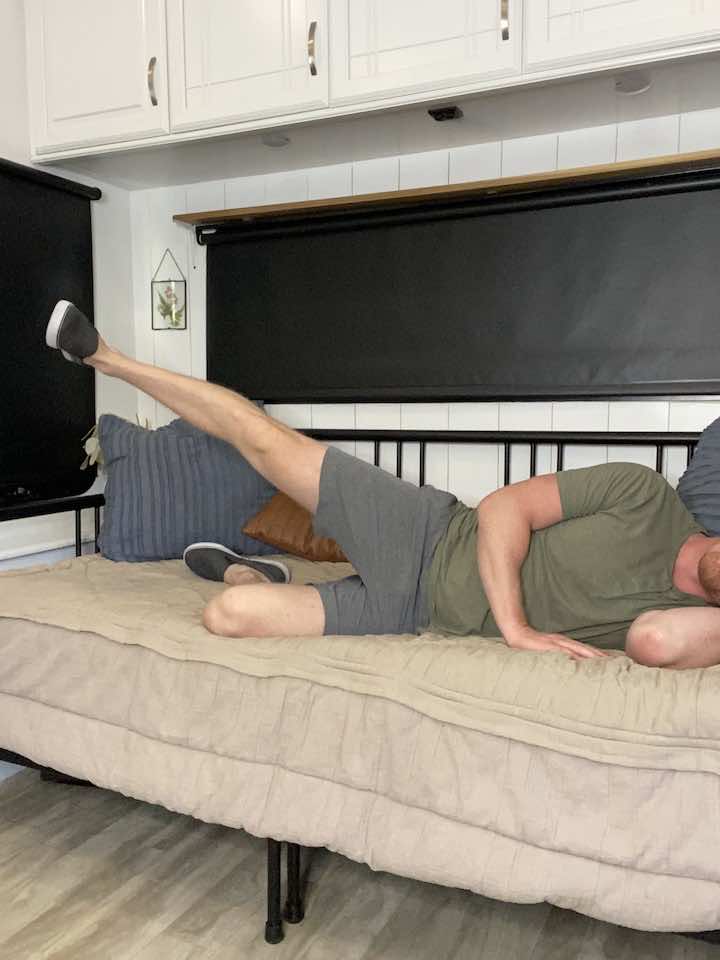
- Lay on your side with your bottom knee bent and your top leg straight. Look down your body to see if your top leg is in line with your trunk. It’s common for the top leg to swing forward a little, so you may have to bring your top leg back an inch or two so that your body is in a straight line from the tip of your head to the tip of the foot on your straight leg.
- Slowly lift your top leg towards the ceiling about 6-12 inches, keeping your leg in line with your body, don’t let it float forward. Then lower your leg back down.
- Keep your hips and shoulders square to the wall in front of you while your leg moves.
- Try to complete 3 sets of 10 on each side if you don’t feel increased pain.
Remember to consult with your healthcare professional before starting any new exercise routine, especially if you have pre-existing conditions or concerns.
Preventing and Treating Low Back Pain
To keep your back in tip-top shape and avoid low back pain, try incorporating these tips into your daily routine:
- Take frequent breaks from sitting. Set a timer to remind yourself to stand up and stretch every 30 minutes or so. It’s like your favorite commercial break but for your back.
- Work on your posture. Remember the good old days when your mother told you to sit up straight? Turns out, she was right. Proper posture can help alleviate low back pain.
- Exercise regularly. Engage in activities like walking, swimming, or even ballroom dancing. Strength training is especially important for maintaining strong and active muscles.
- Try a sit/stand desk. These desks allow you to switch between sitting and standing, promoting movement and a healthier back.
Conclusion
While sitting may be the new smoking, it doesn’t have to be a pain in the back. You can enjoy your golden years with less discomfort by understanding the causes of low back pain, incorporating regular exercise into your daily routine, and performing specific exercises to target the affected muscles.
So go ahead, put on those groovy tunes, and try these exercises. Your back will thank you, and you might find yourself reminiscing about the days when you could twist and shout without a care in the world. With a little effort and dedication, you can work towards a future with less low back pain and more dancing the night away.


